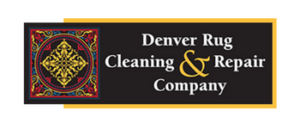Proper Care for a Rug: A Guide to Maintaining Your Investment
Rugs serve as a beautiful and functional addition to any space, adding warmth, texture, and personality to a room. Whether you have an exquisite Persian rug or a modern area rug, it’s crucial to understand the importance of proper care to maintain its beauty and prolong its lifespan. In this blog post, we will explore the essential steps and best practices for the care and maintenance of rugs, helping you preserve your investment for years to come.
Regular Vacuuming:
Regular vacuuming is the foundation of rug care. It helps remove loose dirt, dust, and debris that accumulate on the surface and within the fibers. Use a vacuum cleaner with adjustable height settings to prevent the rug from getting too much suction or being pulled too hard. For delicate or antique rugs, consider using a handheld vacuum or a brush attachment to gently remove dirt.
Rotate Your Rug:
To ensure even wear, rotate your rug every six months, especially if it’s exposed to heavy foot traffic. Rotating the rug prevents specific areas from becoming overly worn or faded, maintaining a more uniform appearance. You can also rotate furniture periodically to distribute the weight and avoid permanent indentations on the rug.
Blot Spills Immediately:
Accidents happen, and when spills occur on your rug, it’s important to act quickly. Blot the spill immediately with a clean, white cloth or paper towel to absorb as much liquid as possible. Avoid rubbing or scrubbing the affected area, as it may cause the spill to spread or push the stain deeper into the fibers. For stubborn stains, consult a professional rug cleaner to avoid damaging the rug further.
Professional Cleaning:
While regular vacuuming is essential, professional rug cleaning should be scheduled periodically to remove deep-seated dirt and stains. The frequency of professional cleaning depends on the rug’s material, traffic level, and the presence of pets or allergens. It’s best to consult with a professional rug cleaner who specializes in your specific rug type to determine the appropriate cleaning schedule and method.
Protect from Sunlight:
Direct sunlight exposure can cause the colors of your rug to fade over time. To prevent this, consider using window treatments, such as blinds or curtains, to filter or block UV rays. If the rug is placed in a sunny area, rotate it periodically to ensure even exposure to sunlight. Additionally, consider using UV-protective window films to minimize fading.
Use Rug Pads:
Rug pads are an often overlooked yet essential accessory for rug care. They provide a cushioning layer between the rug and the floor, preventing slipping, reducing wear and tear, and providing additional insulation. Rug pads also allow air circulation, which helps prevent moisture buildup and the growth of mold and mildew.
Address Pet Hair and Odors:
If you have pets, you know how their fur can cling to rugs. Regular vacuuming helps remove loose pet hair, but for stubborn pet hair, consider using a pet brush or a sticky roller. To eliminate pet odors, sprinkle baking soda on the rug’s surface, let it sit for a few hours, and then vacuum it up. If the odor persists, professional cleaning may be required.
Protect from Furniture:
Heavy furniture can leave indents and compress the rug fibers. To prevent this, use furniture pads or coasters under the legs of tables, chairs, and other furniture pieces. This distributes the weight more evenly and minimizes the risk of permanent damage to the rug.
Avoid DIY Repairs:
If your rug sustains damage, it’s best to seek professional assistance for repairs. DIY repairs can often worsen the situation and cause irreparable harm to the rug. A professional rug repair expert can assess the damage and employ appropriate techniques to restore your rug’s integrity and beauty.
Store Properly:
If you need to store your rug, follow these guidelines to ensure its protection. Clean the rug thoroughly before storage to prevent attracting moths or other pests. Roll the rug with the pile facing inward to protect it from dust and light exposure. Store the rolled rug in a cool, dry place, preferably in a breathable, acid-free material like cotton or muslin. Avoid storing rugs in damp basements or attics, as moisture can lead to mold and mildew growth.
By following these care and maintenance tips, you can enjoy the beauty and longevity of your rugs for years to come. Remember, every rug is unique, and it’s always wise to consult with professionals when in doubt about specific cleaning or repair requirements. With proper care, your rug will continue to enhance your living space and bring joy to your home for generations.


